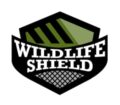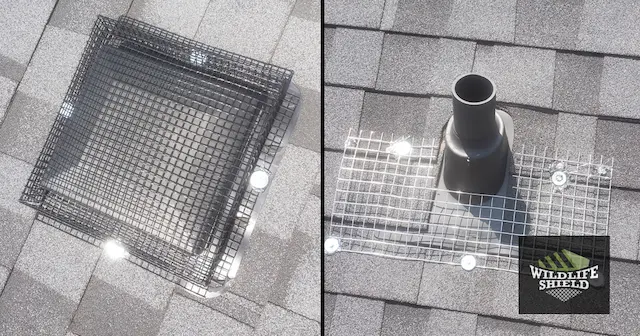This case will look at a raccoon problem in an attic in a home along the 16th Avenue corridor, an older neighbourhood with a mature tree canopy. Upon our inspection, we discovered that baby raccoons were present in the attic creating an additional challenge. With the installation of our one-way doors and some patience, Raccoon Control was able to remove the raccoons from this Markham home and secure the roof from further problems.
A well establishes suburb of Toronto, Markham has recently become a magnet for large corporate office buildings and high-density housing complexes. Over the past couple of decades, Markham has seen major development, especially along the Hwy. 7 corridor. High-rise buildings surrounded by shopping centres now line this popular roadway.
The northern parts of Markham have managed to remain mostly farmland with many golf courses spread throughout the area.
Roof and Attic Inspection
Our team was called in to look at the homeowner’s attic space after hearing noises in the ceiling. They were not sure where the animals had entered from, so our primary objective was to find any part of the roof that may have been breached.
Our certified wildlife technician performed an inspection of the entire roof structure and identified gaps in some of the soffit intersections. These vulnerable areas are often compromised because of the small gaps they present. Wildlife can often widen these gaps enough to enter the attic.
It was also determined by our technician that there were baby raccoons present in the attic. Because they were in an inaccessible area of the attic, we would need to return to pinpoint their location using a thermal camera. This device is used from within the home to identify warm or hot spots on the ceiling which will point to a nesting site.
Raccoon Exclusion Install
As an initial step, we secured the soffit intersections that had been compromised and installed a one-way door to allow the raccoons to leave the attic space in a safe and humane way. These special plexiglass doors prevent the animals from re-entering the attic.
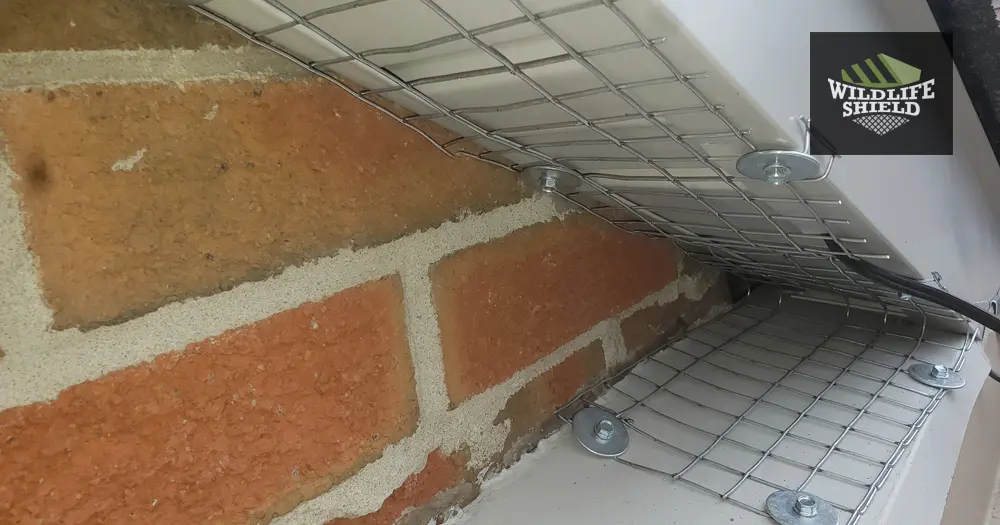
We returned the following day to perform a thermal inspection. Our technician did not detect any hot spots and after visually inspecting the attic, determined that the animals may have already vacated. Although we use very sophisticated equipment, such as thermal cameras, the babies can still go undetected.
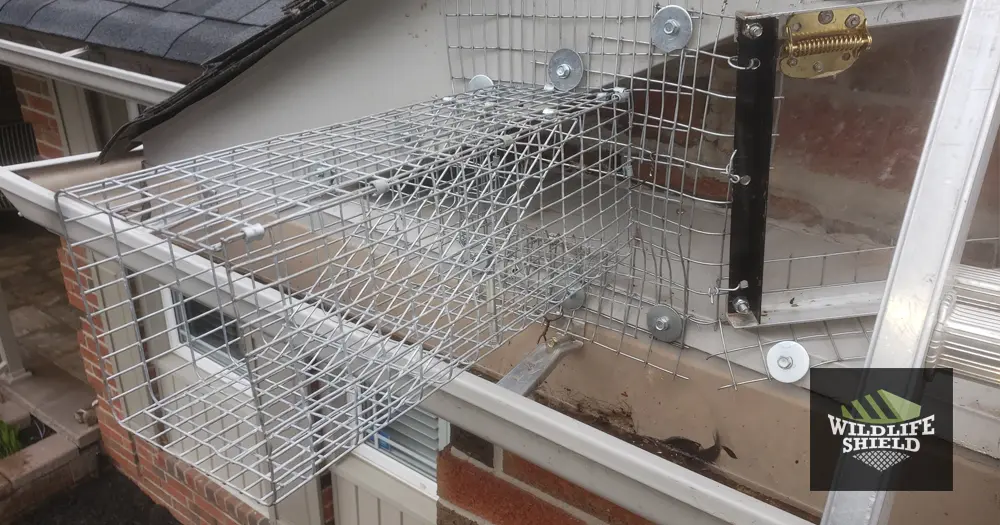
As an extra precaution, our technician installed a baby raccoon one-way door alongside the original door. This door is smaller in size and is designed for smaller animals to easily pass through.
Follow Up and Raccoon Disinfection
When we returned several weeks later to remove and patch the one-way doors, we found that the baby door had been broken off. This may have been caused by a larger animal attempting to enter the structure through the small door.
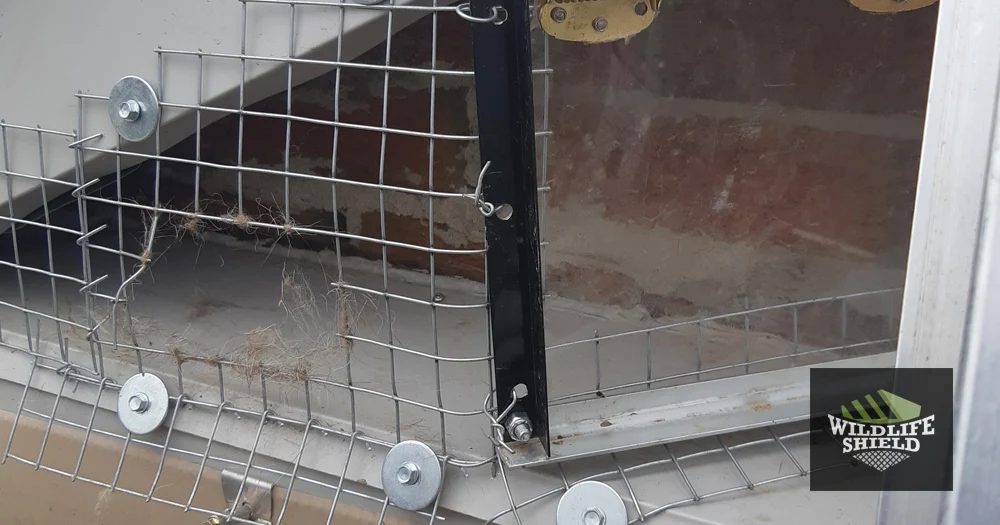
Because the attic was once again exposed to the outside, we re-installed the baby one-way door and allowed for more time for any animals remaining inside to exit. At this time we also secured all roof vents and plumbing vents with galvanized steel mesh covers. These covers will protect the vents from being compromised by wildlife attracted to their warmth, especially in the winter months.
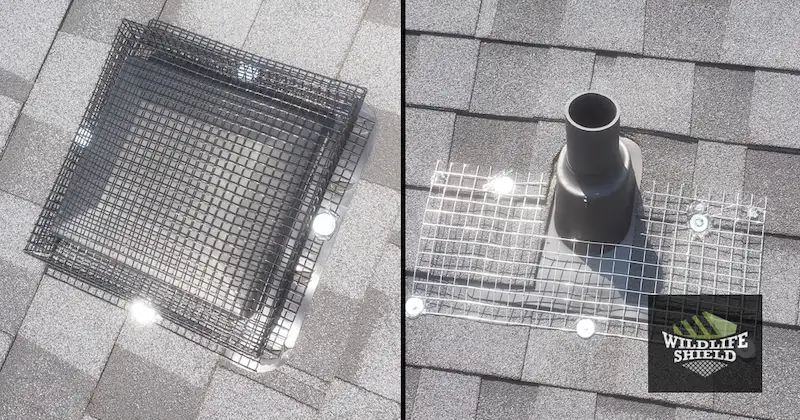
We came back to the property to remove the one-way doors and were informed by the homeowner that a strong odour had been present in the bathroom area of the house and appeared to be coming from the attic. Upon investigation, we found an area that had been heavily soiled by the raccoons.
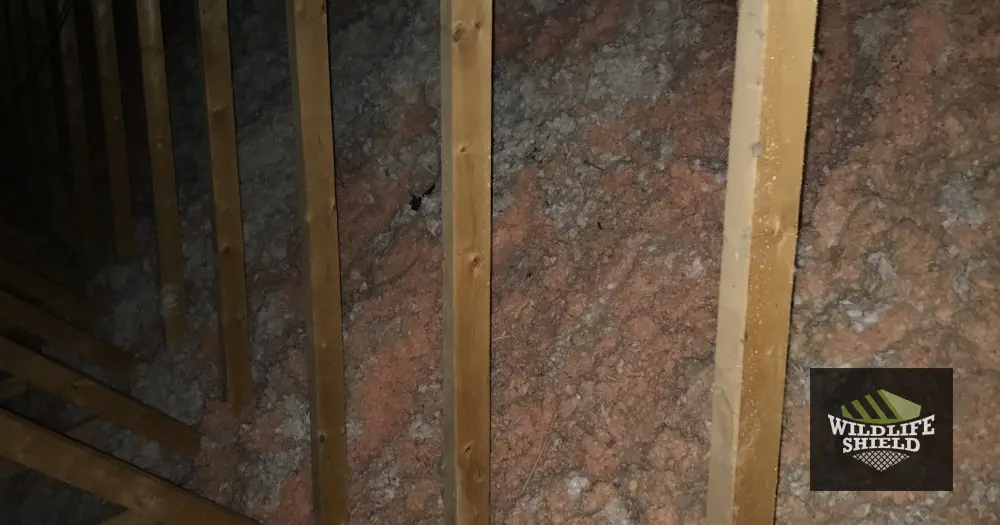
We proceeded to disinfect the attic. All the disinfectants we use are botanical broad spectrum hospital grade disinfectants that are also labelled by Health Canada as active Covid-19 killers. Application is usually delivered via handheld sprayers or ULV foggers. The ULV foggers evenly distribute their disinfectant mist and coat all surfaces.
Conclusion
It is common for raccoons to penetrate the roof structure through vulnerable spots. They are notorious for being able to grab and pull sheet metal as well as gnawing through the wood. In this case, they had made their way in through a soffit intersection.
Our certified wildlife technicians were able to identify all compromised areas quickly and proceeded to secure them with galvanized steel mesh. Once the one-way doors were installed it was only a matter of time before all animals had left the attic.
Our 2-year warranty will ensure that the roof stays secure and if any of our installations is breached or damaged, we will return to repair or replace.
